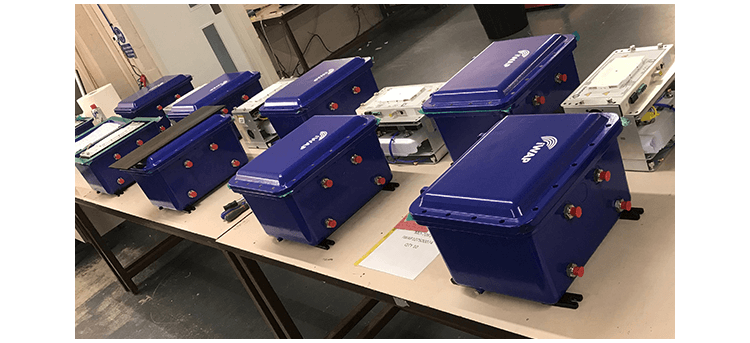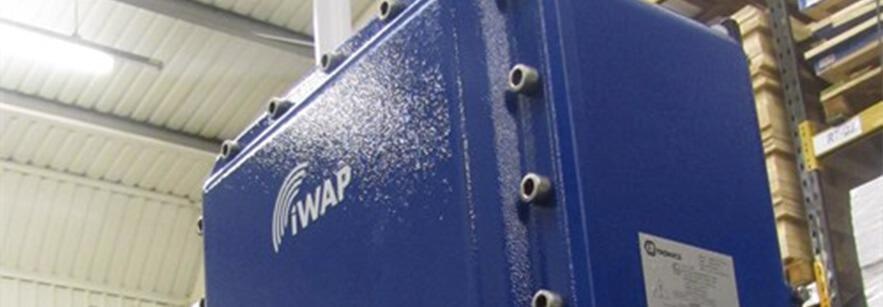Designed to contain an explosion, an Ex d enclosure helps prevent any flames, sparks, and hot gases from escaping into the surrounding atmosphere should an internal explosion occur. Additionally, fitting an Ex d enclosure to equipment can safeguard against external dirt, dust, moisture, or water.

Image Credit: Extronics Ltd
The enclosure may house equipment such as relays, contactors, transformers, power supplies, radio devices and other electrical equipment that have the potential to produce hot surfaces.
Occasionally referred to as “explosion-proof” or “flameproof,” an Ex d enclosure contains what is known as a flame path. The flame path design can differ depending on the assembly of the Ex d enclosure system.
Flame Path
Flame paths are spaces within the enclosure that, if an explosion occurs internally, starve the flame of oxygen by the time it has reached the end of the flame path. In addition, they cool down the flame to such an extent that only air propagates from the explosion. The flame remains confined to the enclosure and, therefore, cannot ignite an ambient gas.
Thus, Ex d enclosures can be regarded as explosion-proof or flameproof. Some flameproof boxes have flame paths that function on a surface-to-surface basis, like a flange touching a joint. Whereas others, such as a conventional IIC gas group enclosure, possess a lid that is screwed into the body of the enclosure. In these enclosures, the flame path is contained in the thread, driving the flame in and out of the thread before it has the chance to escape into the external environment: the thread extinguishes the flame in this design.

Image Credit: Extronics Ltd
The flameproof protection concept functions on the premise that it is not aiming to completely impede a leak of gas or oxygen into an environment; rather, it instead focuses on the ability to contain a resulting explosion from gas and oxygen that penetrates the enclosure.
Therefore, conventional pieces of electronics, including wireless technology, can be situated within an Ex d enclosure in a hazardous area without the need for additional and expensive certifications. This is on the condition that the manufacturer of the wireless hardware meets the conditions of the enclosure solution.
Clauses/Considerations
While Ex d it is a reliable standard for positioning certain equipment in hazardous areas, it isn’t inherently a safe solution. There are still issues to consider with regards to the general equipment being housed within it and the standards they need to be in compliance with. For instance, making sure the dissipated power is within the appropriate limits to reach the required T-Class.
When considering the purchase of an Ex d enclosure, it is crucial to contemplate the appropriate tests/inspections that should be carried out. These are detailed carefully in EN / IEC 60079-0 (general requirements) and in EN / IEC 60079-1 for the “flameproof” (pressure-tight encapsulation) type of ignition protection.
One particular aspect to consider when deliberating over your equipment is the volume that the equipment takes up within the enclosure itself. The enclosure must have a specific amount of free cross-sectional area. The more significant the reduction in the free volume within the enclosure, the more extreme the explosion could become inside the free space available due to pressure piling. Therefore, the pressure of that explosion will significantly increase.
Application Examples
It is typical to observe Ex d enclosures in zone 2 areas where other, more specialized setups would be regarded as too time-consuming or costly to develop and certify.
When it is not possible to certify equipment as increased safety, inherently safe, or to any other protection concepts – such as motor starters with contactors large enough to generate a spark – an Ex d enclosure is a conventional solution for housing such a piece of equipment. Therefore, if a particular piece of equipment were to cause an explosion, the explosion would be contained within the enclosure.
Ex d Enclosures – A Cost-Effective Solution
Due to the nature of the certifications held by Ex d enclosures, it is one of the popular standards of protection concepts for hazardous areas. Consequentially, this enables the installations of almost any equipment needed.
Most vendors and manufacturers that provide these enclosures nearly always offer universal or very flexible certificates against the 60079-1 flameproof standard. The versatility and lack of requirement for additional certification for the equipment being housed can often make it less expensive.

This information has been sourced, reviewed and adapted from materials provided by Extronics Ltd.
For more information on this source, please visit Extronics Ltd.